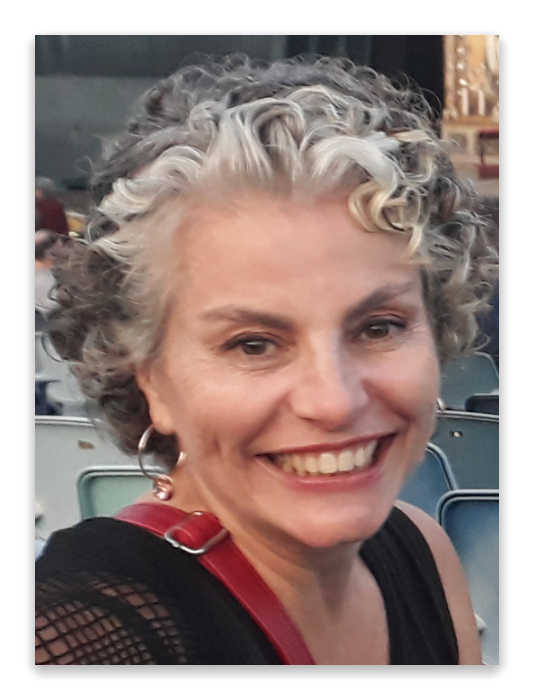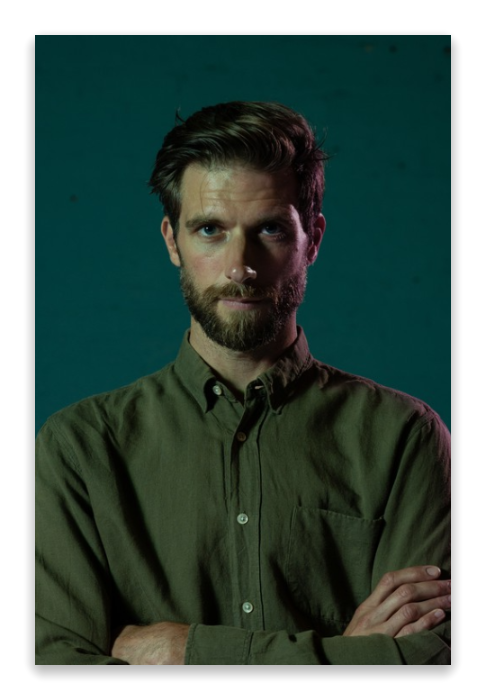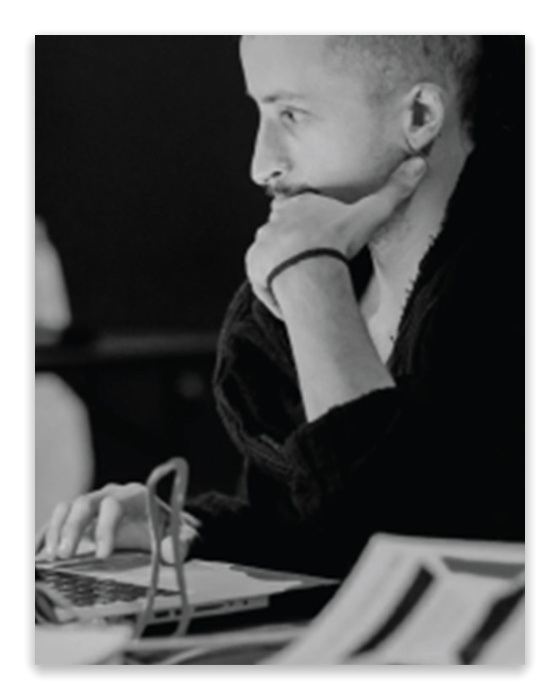Perceptron Explanator
Researchers and software engineers have been developing deeper Artificial Neural Networks, altering architectures, and adding data processing units. These changes add capabilities to these systems, but as a consequence the number of calculations involved in their inner workings also increases. This accretion creates an emerging statistical complexity that turns these systems into black-boxes that need to be explained.
Perceptron Explanator is an interactive and algorithmic visualization that reveals the accumulated decision iterations of the most elementary system of the set of Artificial Neural Networks: the Perceptron. The visualization explains the decision-making progress, revealing the causality present in the process, while freeing the observer from the statistical complexity intrinsic to the system. It aims to help in the understanding of the inner workings of the Perceptron and is intended for non-specialists, for everyone.
Authors
Marco Heleno is a designer who studies and develops work in the areas of Information Visualization, Computational Design and Interaction Design. Recently his work was presented/exhibited at xCoAx (2018, 2020), Reframed (2019), Reboot (2019), ARTECH (2019), Criatech (2020), Ars Electronica (2020), ARTeFACTo (2020) and NeurIPS (2020). He is currently focused on Explainable Artificial Intelligence through Information Visualization, PhD research at NOVA LINCS.
Miguel Carvalhais is a designer, artist, and musician. He is an assistant professor with habilitation at the Faculty of Fine Arts of the University of Porto and a researcher at i2ADS. He studies creative practices with computational systems, having written the book “Artificial Aesthetics” on the topic. He runs the Crónica label for experimental music and sound art and the xCoAx conference (on computation, communication, aesthetics and x).
Nuno Correia is a Professor at the CS Department, NOVA University of Lisbon, Portugal and coordinates the Multimodal Systems area of NOVA-LINCS. He currently participates in EU and national research projects. Nuno Correia supervised 14 doctoral theses and 50+ master theses. He is the author of 100+ publications in journals, conferences, and books. Currently he is involved in setting up a new institute for arts and technology.
The Mask and the Other
The mask allows the transformation of the self into another, whether as a form of defense of emotional well-being, either as a way of dispossessing oneself, generating of an emotional reboot. This collective project, entitled The Mask and the Other, had its genesis in the transdisciplinary artistic explorations that intersect Sculpture, Multimedia and Art Theory, in the context of a degree in Visual Arts and Technologies at ESELx-IPL. We propose a video installation consisting of several screens informally arranged in the exhibition space. Installation intends stimulate intellectual questioning about the concealment/revelation that the mask provides, poetic freeing imagination, thought and senses, summoning the spectator to reimagine himself.
Authors
Ana Nolasco - Doctorate and Master in Aesthetics and Philosophy of Art from the Faculty of Arts of the University of Lisbon and a degree in Fine Arts - Painting from the Faculty of Fine Arts of the University of Lisbon. At the moment, he is carrying out his post-doctoral project at IADE, European University. He has published articles on art theory in Field (US), The Journal of Modern Craft (UK), Island Studies Journal (Canada), Shima (Australia), African arts (US), Nka: Journal of Contemporary African Art (US), between others.
Kátia Sá - Graduated in Sculpture, Master in Multimedia Art, Doctorate in Multimedia in Education. Professor at the Lisbon Polytechnic School of Education (ESELx). Integrated member of CIED-ESELx and CIEBA-FBAUL. Transdisciplinary artistic research, in collaboration with visual artists, musicians, performers, educators and art students, articulating territories — analogue and digital — of sculpture, photography, video, installation, drawing and multimedia performance using programming and image processing in real time.
Jorge Bárrios - Master in Electrotechnical and Computer Engineering by Instituto Superior Técnico de Lisboa, University of Lisbon. PhD student in Arts and Moving Image at the University of Lisbon. Research in the art of the moving image. Member of the coordination team of the Degree in Visual Arts and Technologies, coordinator of the scientific domain Visual Arts, Technologies and Multimedia, ESELx-IPL.
Study for a Cosmic City
Study for a cosmic city is inspired by a utopian urban proposal exposed by the composer and architect Iannis Xenakis in an essay entitled “La Ville Cosmique” (1965). In an attempt to relate computer graphics to the formalization of sound, the structures that characterize the utopian city are designed using superquadratic curves capable of describing reasonable variations in amplitude and pitch. Parameter values extracted from buildings and paths are used to process sound materials from unidentified radio transmissions actually received worldwide. In the graphic representation, each building transmits a specific radio signal whose quality and intensity depend on the position of a cursor, also interfering with the other sound sources. On the other hand, paths on the ground define the meso- and macro-formal articulation of the audiovisual work as well as the virtual localization of the processed audio signals.
Authors
Julian Scordato is a composer and media artist who works mainly with sound and graphics. He studied composition and electronic music at the Conservatory of Venice and sound art at the University of Barcelona. Co-founder of the Arazzi Laptop Ensemble, he has performed live electronics both in group formations and as a solo. As a technologist, Scordato has written articles and presented results related to interactive systems for music performance and graphic notation in conferences and masterclasses. He currently works as a professor of electroacoustic music composition at the Conservatory of Padua and coordinator of SaMPL – Sound and Music Processing Lab. His award-winning electroacoustic and audiovisual works have been performed and exhibited in international festivals and institutions including Venice Biennale, Institute of Contemporary Arts (London), Centre de Cultura Contemporània de Barcelona, Prague Quadrennial of Performance Design and Space, Electronic Language International Festival (Sao Paulo), Cervantes Institute (Rio de Janeiro), International Image Festival (Manizales), Gaudeamus Music Week (Utrecht), Centre for Contemporary Arts (Glasgow), Sonorities Festival (Belfast), Art & Science Days (Bourges), Athens Digital Arts Festival, ZKM Center for Art and Media (Karlsruhe), Kochi-Muziris Biennale, Center for Computer Research in Music and Acoustics (Stanford), and New York City Electroacoustic Music Festival.
Ariane
Ariane is a deepfake video of Ariwasabi, the world’s most famous unknown model from the stock image website Shutterstock. Billions of people see her face on a regular basis but no one knows who she is. An image ghost.
In a world where image broadcast is dictated by its usage, reality proves out to be schizophrenic. Machine learning is leading us to a future where new words can be put into speeches. Social media profile images and celebrities are transformed on to porn stars and video footage can be altered to put people in places where they never been.
Leading us to believe that an event occurred in order to influence the opinion and feed one new type of invisible and unknown violence.
For our pupils to get in touch with reality, which at the slightest miscalculation reveals itself to be pre-designed, eye drops are necessary.
Authors
Production and Direction: Rodrigo Gomes;
Voice: Rita Isabel;
Sound: Rodrigo Gomes;
Images: Carolina Caramujo, CNN, Google, Rodrigo Gomes, Shutterstock, The Overexposed Model, The Overexposed Stock Image Model;
Translation and subtitles: Ricardo Alexandre Batista;
Acknowledgements: Alice Albergaria Borges, Fábio de Carvalho, Fernando Fadigas, Joana Leão, Papoila, Ricardo Alexandre Batista;
Eco Spheres
The Eco Spheres project was born within the scope of my master’s thesis in Multimedia: Arts and Culture (FEUP): Eco Spheres: An audiovisual artistic creation in Anthropocene (Available here. This one project intends to analyze how technology in audiovisual contexts can be allied to (re)create the necessary bonds to Nature, through artistic creation with and for a specific natural space. It’s an almost therapeutic artistic approach to introspective reflection, but also an invitation to meditate on the individual and their inclusion in the natural world.
Authors
Ana Carvalho dos Santos. 1996, Porto.
Graduated in Multimedia from the Superior School of Art and Design (2018), master in Multimedia: Arts and Culture, by the Faculty of Engineering of the University of Porto (2021). Her work is essentially focused on the production of digital audiovisual works, unfolding between installation, performance, visual and sound art. Currently she has artistically explored issues that address dichotomies of the real and imaginary, concrete and abstract, as well as the distortion and perception of objects and sensations real and mental. Nature appears as an object of study and an ally in artistic practice, in particular in his latest Eco Spheres project, started at the end of 2020 and constantly under construction. In this on the making project, he explores the possibilities of artistic creation, in special using digital, to foster environmental awareness and awareness in the it was from the Anthropocene. Between 2018 and 2019 she worked at RUM: Rádio Universitária do Minho and currently works at Imaginando (Braga).
DANCECUBES II
She’s the one: Ornella Muti.
Authors
Joseph Ayerle.
“I am a Visual Artist and mainly known as a pioneer of Artificial Intelligence usage in arts, even if I work as well with classic Digital Art, Photography, NFT and Video Art. Most people noticed my work when I created some years ago the world‘s first film with an AI-generated actress, the retro-futuristic short film „Un‘emozione per sempre 2.0“ (see IMDb).
Born in 1985 I am part of a generation of transformation toward the digital. The acting at the
borderline of art and technology results that my art projects are quoted by the tech institutions
like the Massachusetts Institute of Technology (MIT, “Collective Wisdom”, 2019), and as well I am invited to classic art events, for example to a Biennale in Italy, and to Art Meets Tech festivals like “The New Art Fest Lisbon 2020” or some days ago to the Intervalsfest, Nizhny Novgorod. Novgorod, Russia.
At the end of October 2021 my video artwork Galão - Dreaming of Lisbon will be presented at
the International İKÇÜ ART FESTIVAL of the Faculty of Art and Design of the Izmir Katip Celebi
University, Turkey. Currently DancesCubesII is officially selected for the exhibition project
Change21 of the ARTWEEK in Mykolaiv, Ukraine. My understanding of art started when I worked extensively with intelligent machines and algorithms, understood them – and started then to understand us, the humans… and their human entity which is simultaneously the source of their greatest strength and their greatest weakness.”
 Dr. Fadel holds a Ph.D. in Design from the University of Reading, UK (2007) and Post-Doctorate in Narratives supervised by Jim Bizzocchi at Simon Fraser University, Canada. She teaches Digital Design and New Media at the Federal University of Santa Catarina, Brazil. She studies Poetics of Digital Media and Design for Experience on the following themes: interaction design, narratives, new media, and digital storytelling.
Dr. Fadel holds a Ph.D. in Design from the University of Reading, UK (2007) and Post-Doctorate in Narratives supervised by Jim Bizzocchi at Simon Fraser University, Canada. She teaches Digital Design and New Media at the Federal University of Santa Catarina, Brazil. She studies Poetics of Digital Media and Design for Experience on the following themes: interaction design, narratives, new media, and digital storytelling. Michel van Dartel (b. 1976) is Director of V2_Lab for the Unstable Media and Research Professor at the Avans Centre of Applied Research for Art, Design and Technology (CARADT). He holds an MSc in cognitive psychology and a PhD in artificial intelligence.
Alongside his work at CARADT and V2_, Michel also acts as an advisor and independent curator. Michel also is a manuscript reviewer for conferences and journals
Michel van Dartel (b. 1976) is Director of V2_Lab for the Unstable Media and Research Professor at the Avans Centre of Applied Research for Art, Design and Technology (CARADT). He holds an MSc in cognitive psychology and a PhD in artificial intelligence.
Alongside his work at CARADT and V2_, Michel also acts as an advisor and independent curator. Michel also is a manuscript reviewer for conferences and journals João Beira is a visual artist and art director that explores the intersection between light and augmented reality through real time visualizations and generative design. He is the founder and creative director of Datagrama Visuals (
João Beira is a visual artist and art director that explores the intersection between light and augmented reality through real time visualizations and generative design. He is the founder and creative director of Datagrama Visuals (


